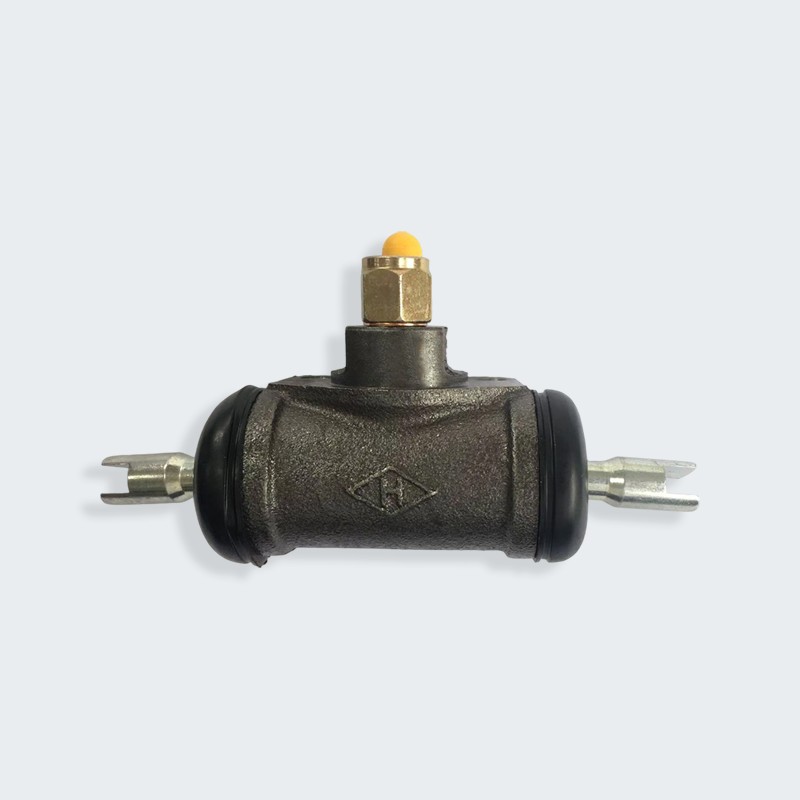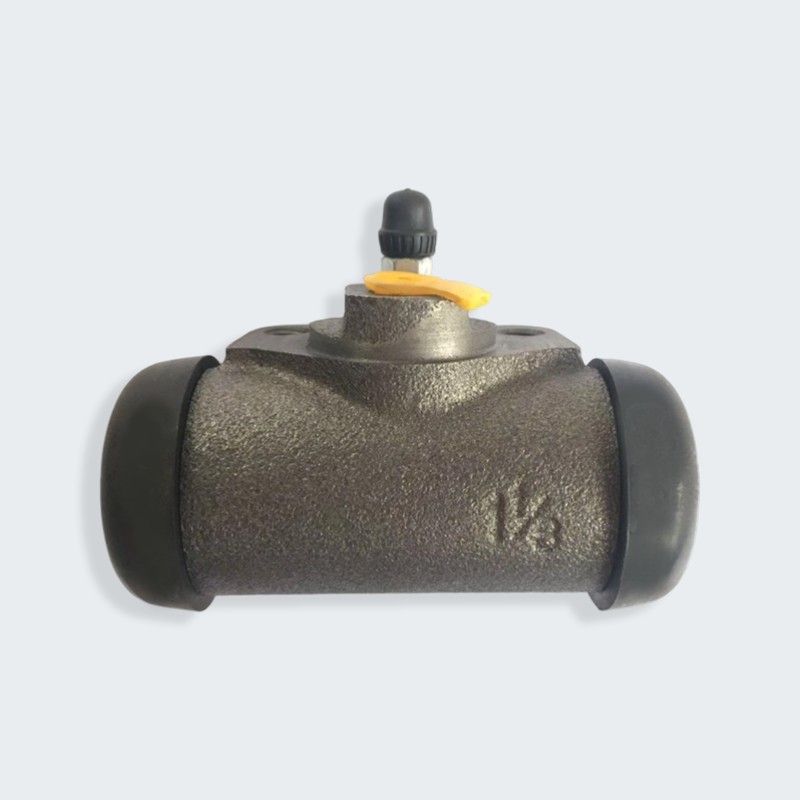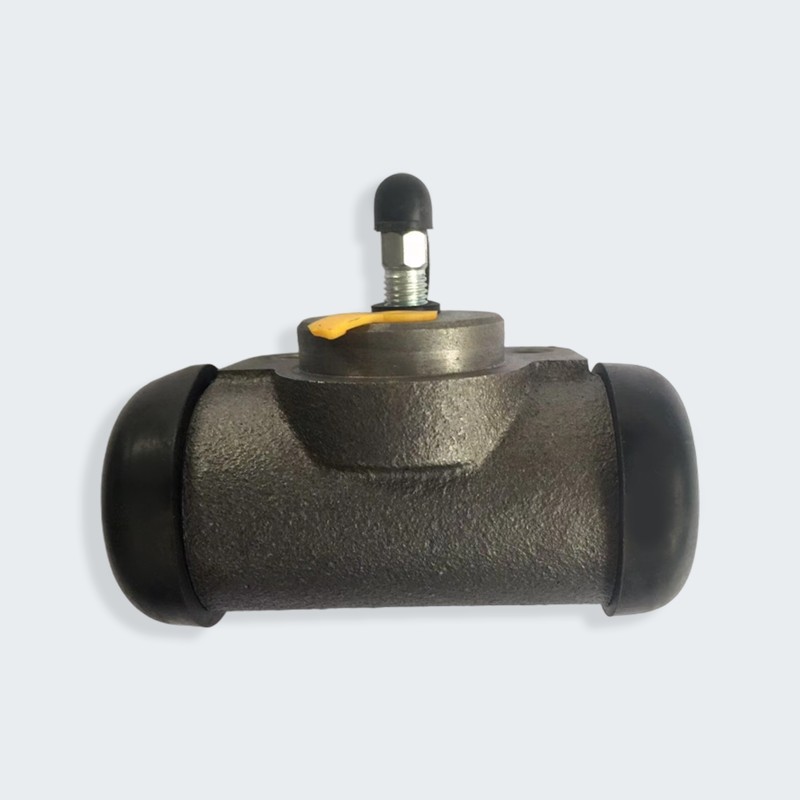professional enterprise engaged in the wholesale of forklift parts

Hangcha 75HS (power braking) Hangcha / Heli 8-10 ton (single pump) forklift brake cylinder

CPCD100A Hangcha forklift / Heli forklift 8-10 ton brake cylinder (double pumps,upper left)

CPCD100A Hangcha forklift / Heli forklift 8-10 ton brake cylinder (double pumps,upper right)

CPCD100A Hangcha forklift/ Heli forklift 8-10 ton brake cylinder (double pumps,Down)



A brake cylinder is responsible for converting hydraulic pressure into mechanical force to engage the brakes. It operates by pushing brake shoes or pads against the drum or rotor when the brake pedal is pressed, creating the necessary friction to slow down or stop a vehicle. Commonly used in forklifts, trucks, and industrial machinery, brake cylinders ensure smooth and responsive braking, enhancing safety and control in material handling and transportation applications.
The primary advantage of brake cylinders lies in their ability to provide consistent and efficient braking performance. High-quality brake cylinders are designed for durability, preventing fluid leaks and maintaining stable hydraulic pressure over extended use. Their precision-engineered construction minimizes wear on other braking components, reducing maintenance needs and ensuring long-term reliability. In demanding work environments, a well-maintained brake cylinder contributes to improved vehicle handling, reducing stopping distances and enhancing overall operational efficiency.
Enterprise establishment

Employees

Zhuji Prebo Brake System Technology Co., Ltd.'s brake cylinders convert hydraulic pressure into mechanical force, thereby achieving braking. When the brake pedal is depressed, the brake cylinder pushes the brake shoes or pads against the brake drum or disc, generating the necessary friction to slow or stop the vehicle. Commonly used in forklifts, trucks, and industrial machinery, brake cylinders ensure smooth and responsive braking, enhancing safety and control in material handling and transportation applications.
1. Function of the Braking System
Hydraulic pressure generated by the master brake cylinder is transmitted through brake lines to the brake cylinders at each wheel. The pistons within the brake cylinders convert this hydraulic pressure into mechanical thrust.
In disc brakes, this thrust pushes the pistons within the calipers outward, clamping the brake pads and pressing them tightly against the rotating brake disc, generating braking force.
In drum brakes, pistons at both ends of the brake cylinder (often called wheel cylinders) move sideways under pressure, directly pushing the two half-moon-shaped brake shoes outward and pressing them tightly against the inner wall of the brake drum, achieving braking. Many modern brake cylinders also incorporate automatic slack adjustment. As the brake pads/shoes wear, the brake cylinder automatically fine-tunes the piston position with each brake return, ensuring consistent pedal travel and responsive braking.
2. Advantages and Features: Precision, Reliability, and Efficiency
As a key actuator in the braking system, the brake cylinder's design reflects extremely high engineering requirements:
High Reliability and Sealing:
The brake cylinder's precision piston and rubber seal (cup) maintain a long-term seal under high-pressure brake fluid, preventing pressure leakage and ensuring 100% braking force transmission. The cylinder body is typically constructed of high-strength materials (such as cast iron or aluminum alloy) that are corrosion-resistant and withstand high pressure.
Powerful Response Speed and Thrust:
The brake cylinder is designed to respond to hydraulic pressure changes with minimal delay. It instantly converts hydraulic pressure into powerful linear thrust, ensuring that braking action is synchronized with the driver's intention and achieving "step-in, step-out" braking.
Excellent Environmental Adaptability:
Located near the wheel, the brake cylinder operates in harsh environments (such as high temperatures, water, and mud and sand). Its reliable dust boot and seal design effectively prevent contaminants from entering, ensuring the smoothness of the internal piston and cylinder walls, and maintaining long service life and stability.
Compact Structure and Functional Integration:
Brake cylinders are designed to be extremely compact within limited space. Furthermore, they are often cleverly integrated with the parking brake mechanism (particularly the parking brake in rear drum or disc brakes), achieving unified service and parking brake functions.